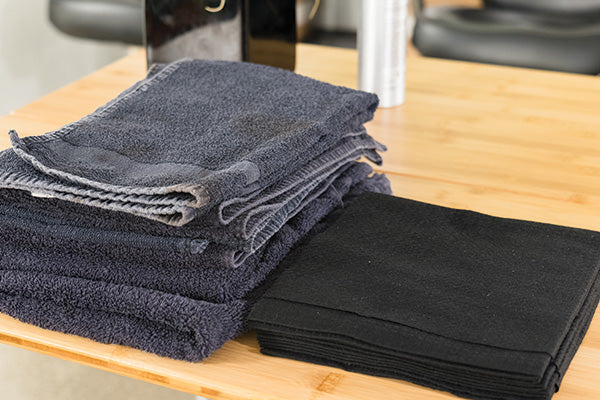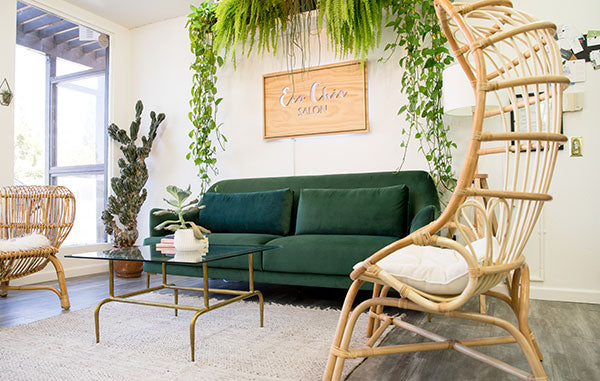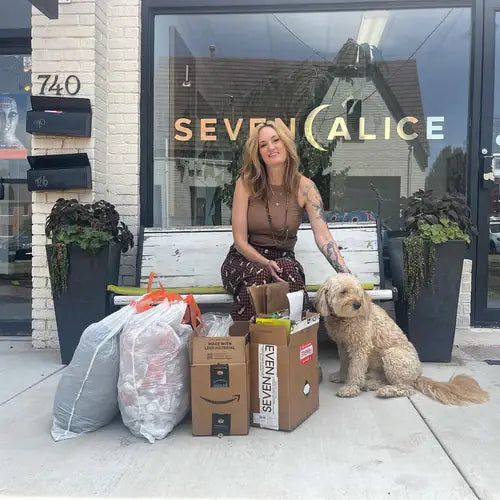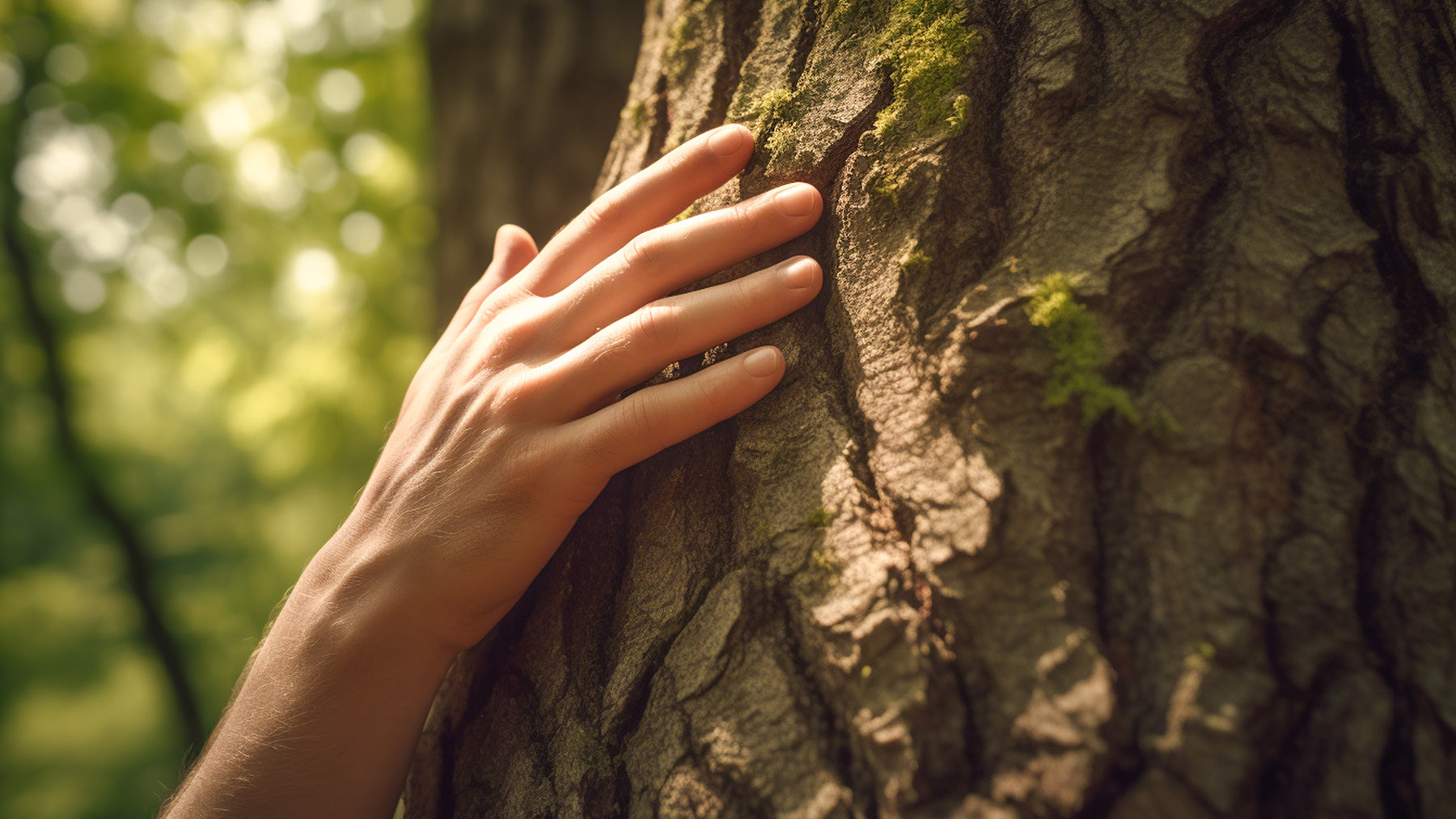Before retiring from professional sports, David Beckham insured his legs for roughly $140 million. He's not alone, either. Several celebrities have pulled out insurance policies on assets that generate their wealth. Mariah Carey insured her voice for $35 million in 2016 and took out an additional policy on her legs $35 million. In our industry, we have gloves.
Hands are the primary tools of the trade as a hair stylist, constantly exposed to water, chemicals, and hair products. Unfortunately, that exposure comes at a cost. Dermatological issues, particularly contact dermatitis, are incredibly common in the beauty industry with studies showing it impacts roughly 70% of hairdressers due to exposure to irritants commonly found and used in the salon. While hair stylists work their magic transforming clients’ appearances, many may be unaware of the long-term impact on their skin and cut their careers short.
The Chemicals Taking a Toll on Skin
Hair stylists regularly work with hair dyes, bleaches, and shampoos that often contain harsh chemicals like ammonia, peroxide, and formaldehyde. Prolonged or frequent exposure to these substances can strip the skin of its natural oils, leading to dry, cracked skin and more serious conditions like contact dermatitis or eczema. Repeated contact can also trigger allergic reactions over time, called cumulative, even in stylists who may not have initially shown sensitivity to these chemicals. For example, bleach, a staple in many salons, is highly corrosive and can damage both the outer layer of skin and deeper tissues, causing chemical burns and irritation. Permanent color often contain para-phenylenediamine (PPD), a known allergen that is listed as the top two chemicals in the salon to create dermatological issues. These conditions not only make day-to-day work uncomfortable but can also become chronic, impacting a stylist's ability to continue their career.
Nitrile Gloves: A Simple, Effective Solution
One of the simplest and most effective ways to protect against chemical exposure is by wearing gloves. However, not all gloves offer the same level of protection. While latex gloves are common in salons, they are not resistant to all chemicals—especially bleach, which can degrade them quickly. This is where nitrile gloves come in. Nitrile gloves are highly resistant to a wide range of chemicals, including bleach, ammonia, and peroxide, making them a superior option for hair stylists who frequently work with these substances. They offer protection from both corrosive chemicals and potential allergens without compromising the dexterity needed to handle hair and styling tools.
Additionally, nitrile gloves are hypoallergenic, making them suitable for stylists who may have latex sensitivities. Using gloves consistently can drastically reduce the risk of developing occupational dermatitis. However, it's important to wear them even during less obvious tasks like shampooing, where prolonged exposure to water and mild detergents can also lead to skin issues and break down the skin's natural barriers.
Alarming Statistics on Skin Conditions in Hair Stylists
The prevalence of dermatological issues among hair stylists is staggering and some studies have indicated that apprentices showed a higher incidence of reactions to chemicals and exposure at the basin than fully trained and experienced stylists. Early prevention and education on why it's important to protect your hands even when shampooing and rinsing is vital to ensuring younger professionals create strong habits to combat occupational conditions.
Take Care of Your Hands
While nitrile gloves are an essential tool in reducing dermatological risks, they are just one part of a larger protective strategy. Stylists should also moisturize their hands regularly to help restore the skin’s natural barrier, particularly after wearing gloves. Implement standards for all your stylists to ensure they wear protective gloves at the basin, the color bar, and while cleaning to protect their skin.
Ensuring that the salon is well-ventilated can also reduce airborne irritants that may settle on the skin and removing toxic cleaners and detergents can minimize the overall quantity of chemicals in the salon environment. Switching to less harmful, eco-friendly cleaners products where possible can provide additional protection from the harshest chemicals without sacrificing performance.
For hair stylists, maintaining healthy skin is vital not only for personal comfort but also for the longevity of their careers. Cutler Pro designed biodegradable nitrile gloves with extra long cuffs to cover the wrist while also designing them to be biodegradable so you can protect yourself without contributing to the millions of gloves tossed in the landfill each year. With proper protective measures like using nitrile gloves, stylists can continue to thrive in their profession without sacrificing their skin health or taking out insurance policies worth millions.









